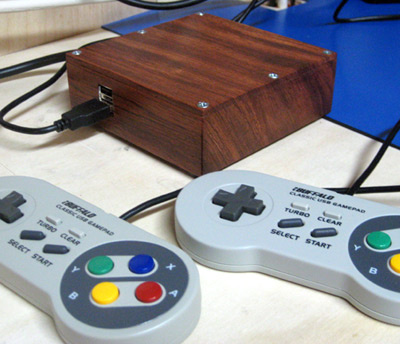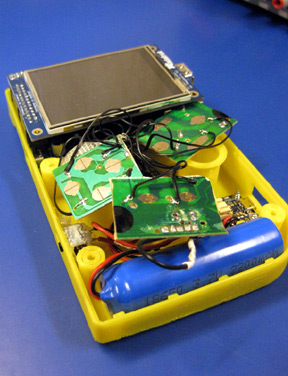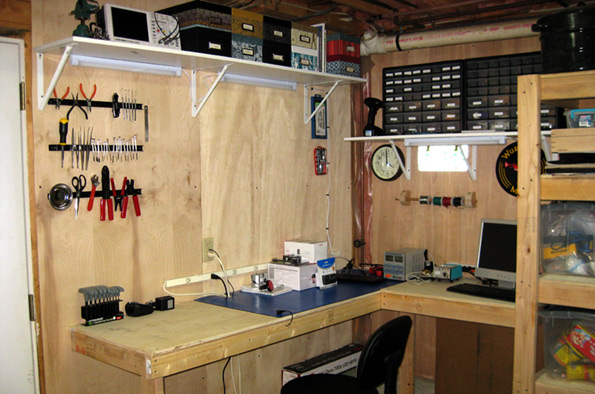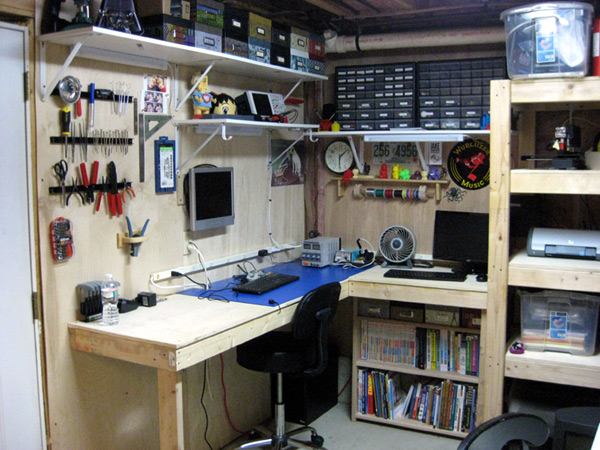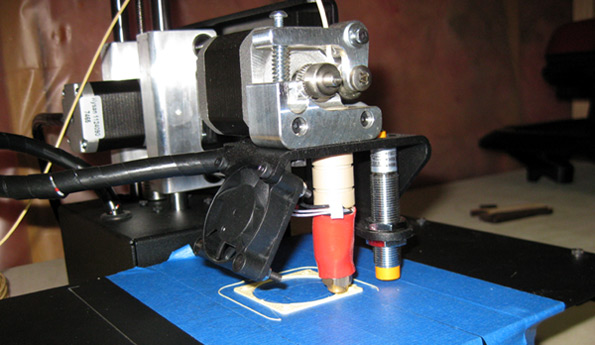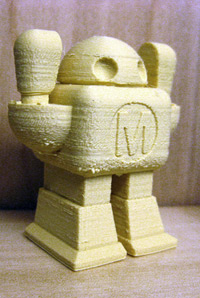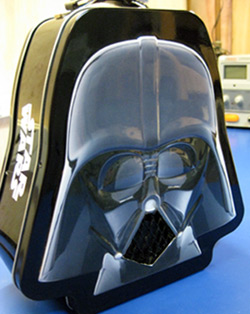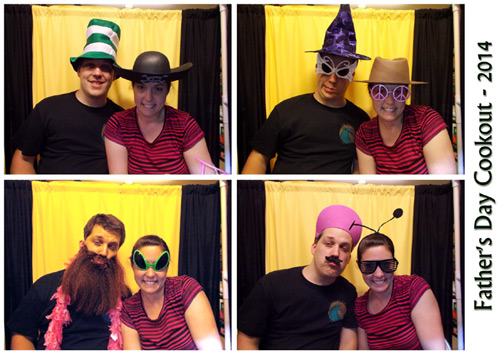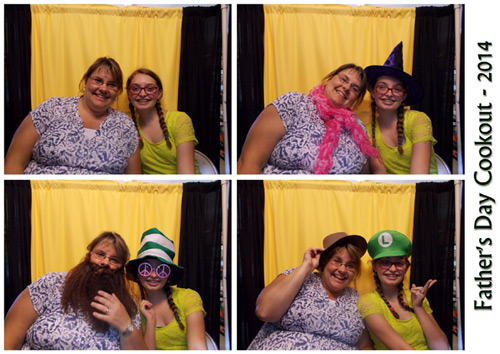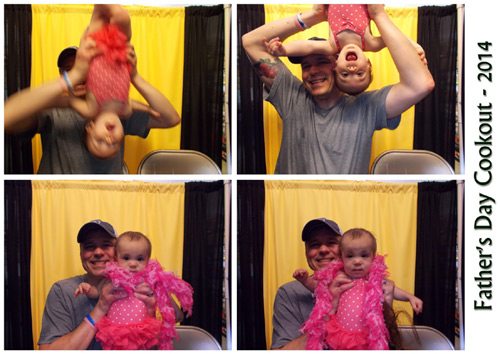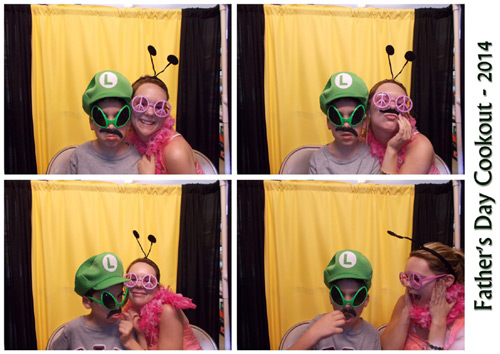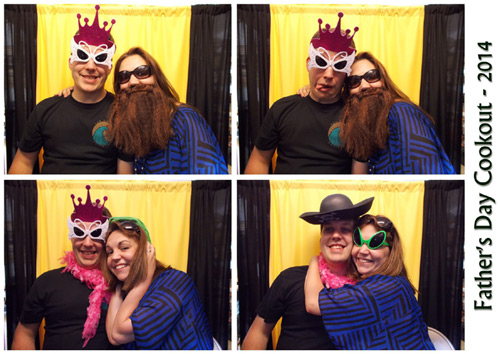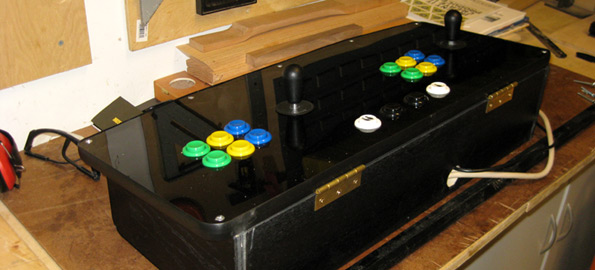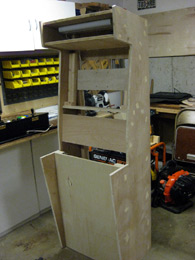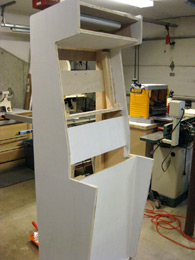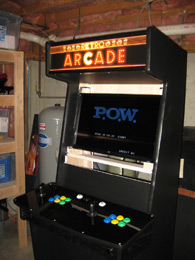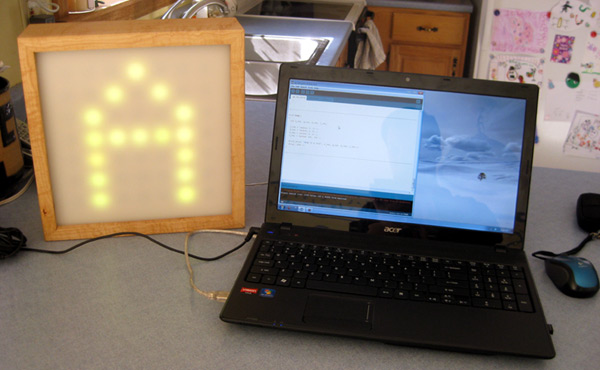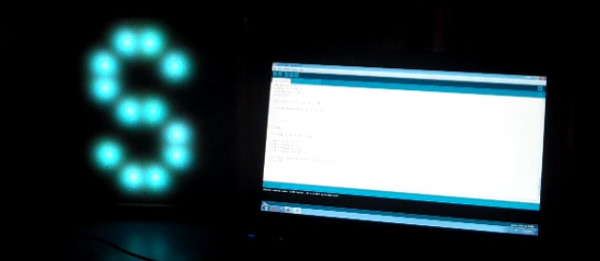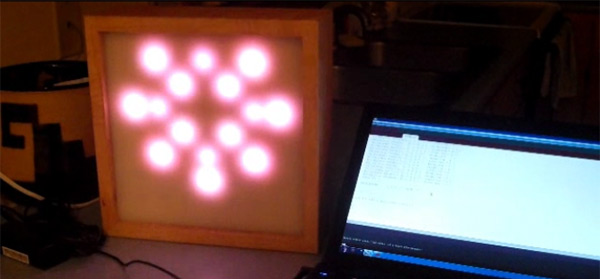As promised, here are the details of the photobooth I built for our Father's Day Cookout. This first pic shows the photobooth box that houses all of the electronics. The big red button on the front lights up (even though it isn't lit in this picture). Once you push that, the green "pose" LED starts blinking - when it starts blinking fast, it's about to take a picture. Once all four shots have been taken, the red LED lights up during the assembly and printing process. One of the things I'd like to improve before next time is speeding up that assembly process - it seems to take too long. Also, I'd like to paint the box a little more interestingly. I ran out of time to do much besides a black satin paint job and some letter stickers - but once I get the enthusiasm to work on it again I'd like to do some kind of custom paint job on the box - maybe even try some silkscreening again.
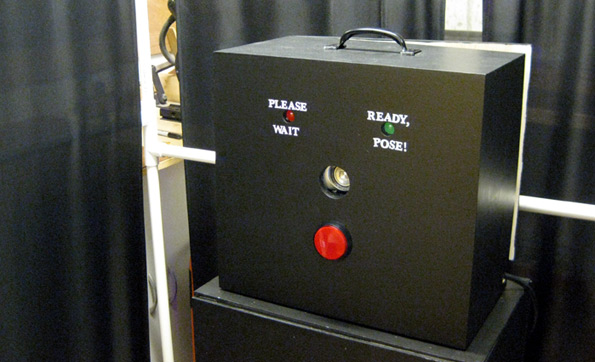
I built the booth itself just from PVC and curtains - but I think I am going to make a few changes before I use it again. I need to make it a little taller, so that it isn't so hard to dial the camera in to exactly the right distance to not be able to see the top bar. Also, I'd like to come up with some system that will allow for multiple backdrops - and easy switching between them. This next picture shows the internals of the electronics box.
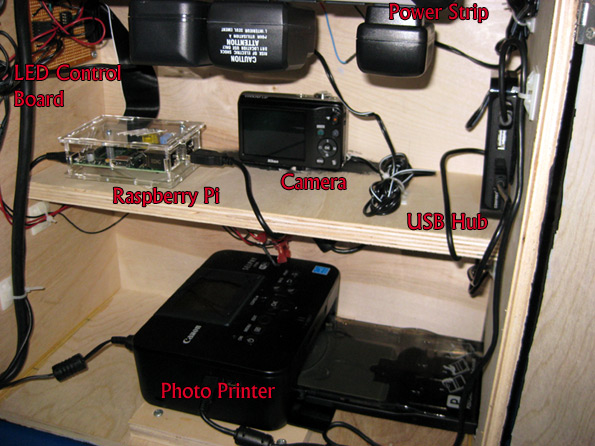
Here is what's inside:
1) Raspberry Pi: The Raspberry Pi was configured per this instructable - Raspberry Pi Photobooth Controller. I had to do a few things differently than listed in the Instructable - mostly I had some Linux permissions problems, and I was never (so far) able to get the script to run successfully at startup.
2) Camera: The camera is controlled via USB, using the gphoto2 package under Linux. I camera doesn't have a DC input, so I make a 'fake' battery pack using some dowels and a DC adapter so that the camera could stay powered all the time. One annoying thing is that I can't adjust the flash or zoom settings on the camera while it is plugged into the Pi, but once you reconnect the camera to the Pi all the settings revert back to defaults. Which basically means I could never get the flash to stay disabled, and instead of zooming the camera I had to move the whole box closer to the chairs in the booth. Annoying - hopefully I will find a way to deal with this with a little more tweaking.
3) Photo Printer: Just a Canon Selphy photo printer - because that's what they had at Best Buy. Works pretty well, though. Only downside is the paper and ink cartridge need to replaced every 36 prints. Which means that if it were used more heavily at the party I would have needed to babysit it a lot more. As it was, it wasn't used as much as I had hoped, but that's mostly because I didn't do a good job of spreading the word that it was there to be used. Next time I will make sure everyone knows right from the start.
4) LED Control Board: I built a little LED control board for switching power for the big red button, plus the two status LEDs. This board connects to the GPIO pins of the Raspberry Pi.
5) USB Hub: The Raspberry Pi can't handle power-hungry peripherals on its USB ports, so you've typically got to connect up a powered USB hub.
6) Power Strip: Not much to say here - everything needed to be plugged in, so it made sense to include one. In the distant future it would be nice to rewire everything in here so that it can all be run off of a single power input to the box, and then regulated down for the individual devices. But I consider that a back-burner luxury for now.
